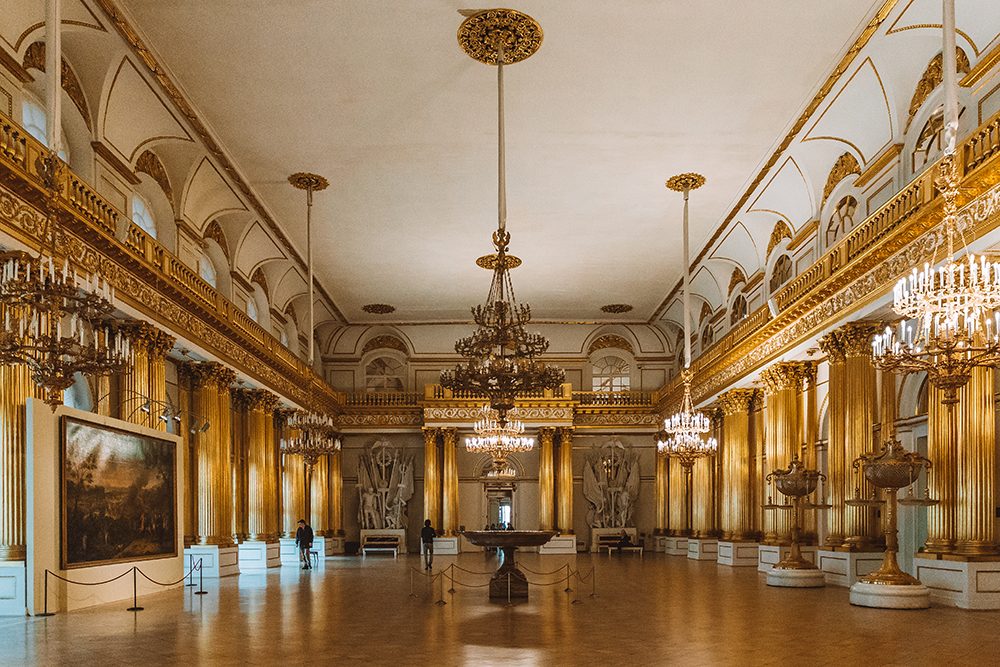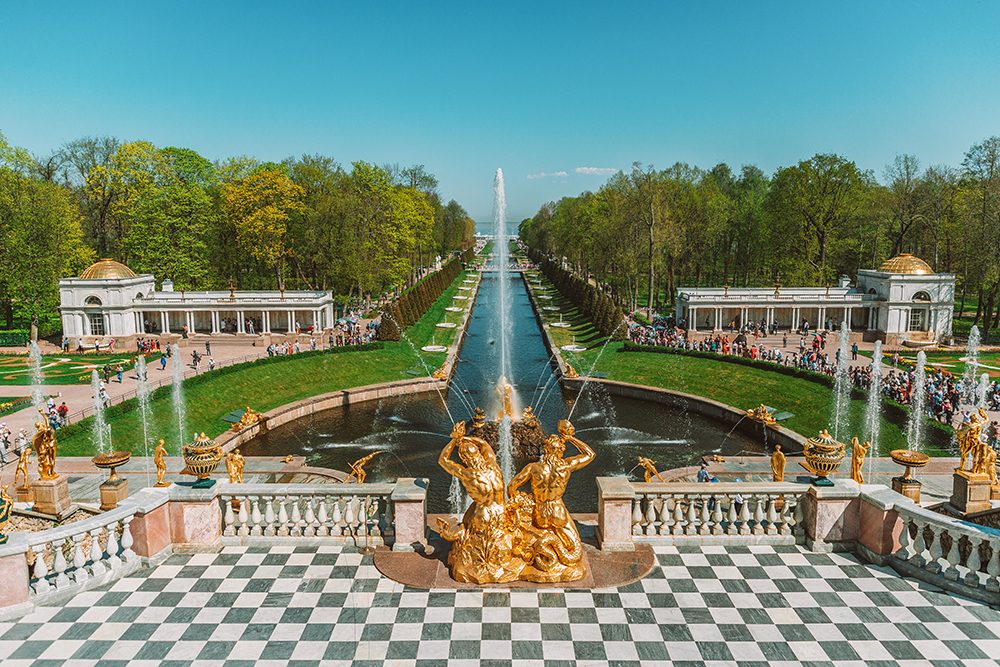World Cup 2018 has certainly put a spotlight on Russia as a tourist destination. But it is far more than just a land of an exceptional caviar and an average football team. Get a sense of country’s unique imperial heritage in the enchanting northern gem that is St Petersburg.
With endless baroque and rococo palaces in turquoise, yellow and pink colours, iconic golden domes of the cathedrals, hundreds of bridges guarded by bronze statues, Russia’s ‘cultural capital’ is the most precious stone in the crown of the world’s largest country. That is the place where all the tsars and aristocrats wanted to live in the past and the place not to be missed today.
We start our tour from the Colonnade atop Saint Isaac’s Cathedral, the largest Orthodox church in the city. The 360 degrees view over the city centre is the best reward after a light panic attack of climbing the windswept stairs, by someone’s cruel joke placed outside the 102-metre-high building! Inside the cathedral is a dazzling interior of 400kg of gold, 500kg of lapis lazuli and 16 tons of malachite. Impressed? Trust me, it is only the warm-up!

It is very easy to navigate St Petersburg—most of the must-sees are spread along the main street, wide and buzzing Nevsky Avenue. So, from St Isaac’s we walk directly to the Uprising (Vosstaniya) Square and its highlight, Winter Palace, the former official residence of Russian monarchs, or 60,000 square meters of opulence.
It’s impossible to explore all three floors of the gargantuan museum in one day and we decide to focus on the ‘Palace Interiors’ route, conveniently highlighted with a different colour on a map. We walk through the throne room and ball rooms with gilded ceilings, chandeliers and marble floors, able to fit in over 10,000 guests at a time. We explore splendid bedrooms and boudoirs, endless galleries lavishly decorated with statues and murals, and just when we foolishly decide nothing in this world will ever impress us again, we reach the jaw-dropping Grand Church of the Winter Palace, from floor to ceiling covered in pure gold. Someone has called this church ‘the throne of God’, and we couldn’t agree more.

The next day starts at Sirnik restaurant. Sirnik is a traditional Russian breakfast dish, sort of a cottage cheese pancake. When it comes to dairy products, Russians can be incredibly creative. At Sirnik you can also indulge in kefir, ryazhenka (buttermilk thick beverage), yogurts and cheeses from their own small cheese factory.
After the meal we set off to explore St Petersburg’s neighbourhoods. Peterhof, the ‘Russian Versailles’ and summer house of tsar Peter the Great, is the biggest and definitely the most crowded palace complex. Thousands of tourists come here to see the legendary technological achievement—150 fountains operating without a single pump. We make sure to arrive before 11am, when the fountains are being ceremonially switched on. It is a beautiful show with classical music, best seen from one of the bridges in front of the palace.

Our next destination is Tsarskoe Selo, an epic palace immersed in lush greens. While Peter’s Peterhof reflects his strong personality as the brave commander, Tsarskoe Selo preserves the gentle feminine touch of his wife, Catherine I. The quirky labyrinth of narrow paths and tiny bridges leads us to The Hermitage. Smart mechanics of the XVIII century invented a system of unusual dining tables for this pavilion. To order a dish, guests had to write it down on a plate which then slid deep under the table to appear again filled with the ordered dish. Three centuries later, and the technological miracle still never fails to impress!
We wrap up the trip to St Petersburg with a boat tour. Bisected by the mighty Neva River, it is called the ‘Russian Venice’ for good reason. Cruising along the busy streets, we get to see not only the glamorous side, but also the quiet outskirts of the city. It feels surprisingly nice to have a glimpse of real life after the weekend of tsars and palaces.
Words: Kseniia Spodyneiko
Photography: Alex Spodyneiko






